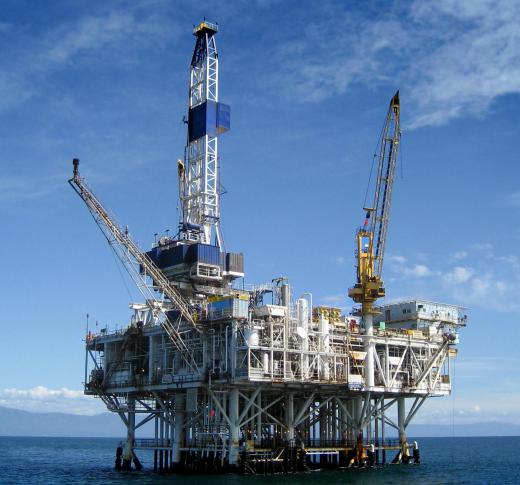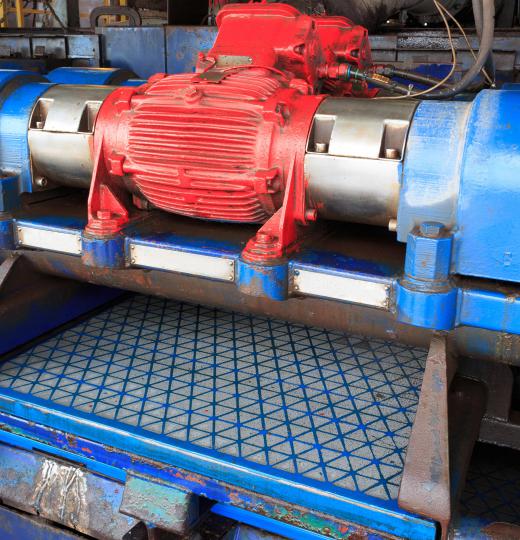Drill pipe is a type of piping used on a drilling rig. It helps with wellbore drilling, which is the process of digging a hole in the ground in order to access a particular natural resource, such as oil or water. The pipe pumps drilling fluid, which generates pressure to keep unwanted fluids out of the liquid pumped, removes drill cuttings, and helps to cool and clean the drill bit.
Most drill pipes are made of a thick layer of steel. There are usually about 30 to 33 feet (9.1 to 10 meters) long, though they come in several lengths. They also come in several different weights and strengths in order to accommodate a wide array of rig sizes.

A typical drill pipeline, consisting of several pipes fastened together with tool joints, will extend over a mile into the ground. The pipe is usually transported to the work site in a stand, which is two or three lengths of pipe joined together. Sometimes the pipe will be connected by an expansion joint, which can help the pipes to react to changes in temperature by allowing them to expand and contract.

The drill pipe pumps drilling fluid into the hole being dug by the drill. Then the force of the pump moves fluid up around the area between the drill and the walls of the hole, in a gap known as the annulus. This circulation of fluid continues throughout the entire drilling process.
As they must be durable enough to handle the pressures of the earth, drill pipes tend to be extremely expensive. The pipes are handled carefully, so that they can be used for multiple jobs. After each project, they are examined for defects and weaknesses, so that they can be restored to full strength before they are used again.
A stand of drill pipe usually sits vertically in back of the drill rig. This portion of the pipe is typically one of a collection of parts that form the drill string, which moves the drilling fluid with the help of pumps. A drill string usually consists of a drill collar, the drill bit, and the drill pipe. The whole contraption engages in a practice called tripping pipe when a drill bit needs to be replaced. During this process, the drill string pulls apart two connect stands and pulls them out of the hole in a motion called disconnecting or breaking out.
